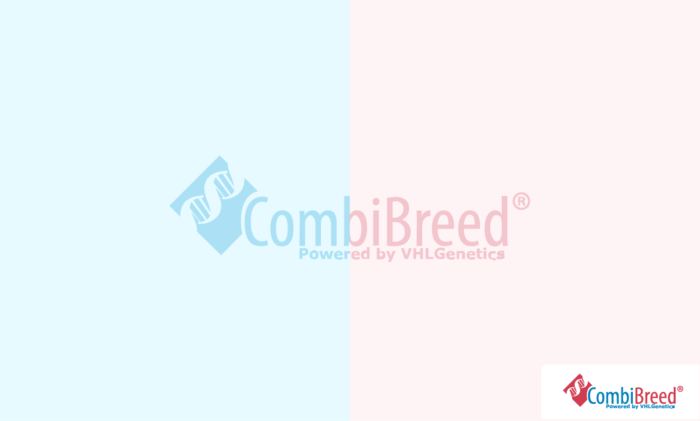
€57,48 €47,50 hors TVA
Goniodysgenesis and Glaucoma (GG) affects the development of the eye’s drainage system.
10 working days
Excl €5,95 shipping and administration per order (incl. VAT)
Caractéristiques
| Breeds | |
|---|---|
| Gene | |
| Chromosome | 17 |
| Mutation | c.590G>A |
| Mode of Inheritance | Risk Factor |
| Organ | |
| Specimen | Swab, Blood EDTA, Blood Heparin, Semen, Tissue |
| Also known as | Pectinate ligament abnormality (PLA); Primary closed-angle glaucoma (PCAG) |
Informations générales
Goniodysgenesis and Glaucoma (GG) affects the development of the eye’s drainage system. It is caused by an autosomal recessive mutation in the Olfactomedin-Like 3 (OLFML3 gene). This gene is involved in the creation of a protein that supports cell structure and is involved in blood vessel formation. Specifically in Border Collies, affected dogs are at severe high risk for having a malformed or partially closed drainage angle, which prevents fluid from exiting the eye properly. This is called goniodysgenesis and can lead to glaucoma, though the effect of the mutation is variable.
Caractéristiques cliniques
This mutation leads to poor fluid drainage of the anterior chamber and increased eye pressure, which can cause primary glaucoma, which often results in blindness. Symptoms of glaucoma are observed between 1 and 4 years of age and include eye pain, redness, an enlarged or bulging eye, a large pupil that doesn't respond well to light, light sensitivity, behavioral changes, and (eventually irreversible) vision loss.
In the early stages, Border Collies with glaucoma secondary to goniodysgenesis are often responsive to medication.
A veterinarian can measure a dog’s intraocular pressure (IOP) using tonometry, which provides insight into whether a dog with this mutation has relatively high, elevated, or normal eye pressure. In this way the veterinarian can monitor the IOP and start treatment of the glaucoma in an early stage.
Additional Information
This condition may lead to primary glaucoma in affected dogs, but not every dog with goniodysgenesis will develop glaucoma. Also, heterozygous carriers may show mild signs or remain unaffected. Therefore the mutation is inherited in a recessive manner for goniodysgenesis, while it serves as a risk factor of glaucoma. The progression from goniodysgenesis to glaucoma depends on additional genetic, environmental, or random factors, making glaucoma less predictable even in genetically affected dogs.
Références
Pubmed ID: 30696701
Year published: 2019
Omia ID: 1223
Omia variant ID: